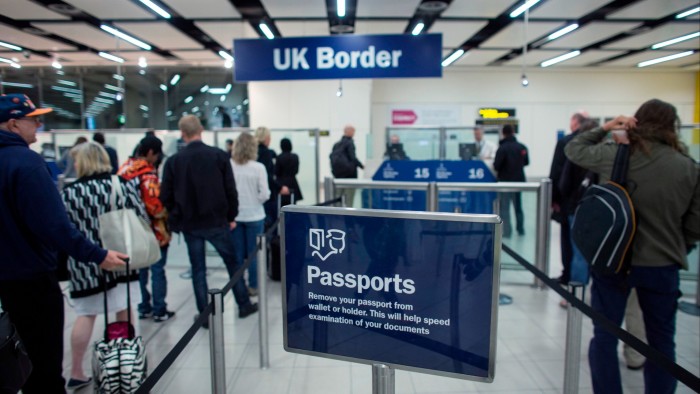Unlock the Editor’s Digest for free
Roula Khalaf, Editor of the FT, selects her favourite stories in this weekly newsletter.
The writer is director of British Future, a think-tank
Is immigration just a numbers game? It shouldn’t be. The white paper expected on Monday offers the government the chance to change the UK’s debate. But the opportunity might be missed.
The instinct of Sir Keir Starmer’s government would be to strike a balance between politically useful messages and rational policy. Labour wants to lambast Conservative former ministers for a loss of control, after net inflows hit an unprecedented peak of 900,000 a year in 2023. But it must also demonstrate that it has workable solutions that populist opponents lack.
Reform UK’s dramatic gains in the local elections have, however, diluted the government’s confidence to reframe the immigration debate. The mood music at Westminster reveals ministers mainly responding to the right’s success in turning the policy debate in to a rhetorical auction over how low net migration numbers should go.
There are ironies to Labour getting trapped in this numbers game. Documented immigration has actually fallen by around a third since the party won the election last July. But that seems to be the best-kept secret in Britain. The white paper will be followed, days later, by the Office for National Statistics producing the first headline net migration figure covering the post-election period. Publicly available data already shows that 460,000 fewer visas were issued in 2024 than 2023. But with UK asylum claims rising by 25,000, the bigger overall fall in immigration numbers has gone unnoticed.
Net migration in 2025 is probably already now running at around half of the 730,000 figure that Labour inherited in 2024. But Labour is in the curious position of saying it is still too high while being unwilling to identify a sustainable level because it is opposed to setting its own net migration target.
Such targets face sensible objections — not least that previous governments always missed them. And ministers do not want a one-size-fits-all policy: trying to attract scientists from Donald Trump’s America is a new policy objective, for example. But there is a short-term tactical motive for wanting to spin the white paper as tough: Labour needs something to offset any outcome of the EU “reset” summit later this month, which could involve a youth mobility scheme.
So what would a more confident reframing of the immigration debate look like? Ministers could argue that they are managing numbers downwards but in a balanced way, choosing immigration where workers are needed to meet Labour’s missions on growth and on the NHS, but with an eye on an adequate housing supply and cost-benefit analysis by the Treasury. A published immigration plan, presented to parliament, would make the choices and trade-offs explicit.
Anthony Albanese’s Australian Labor government did just that in its December 2023 Migration Strategy, balancing control and contribution, defending humanitarian routes while promoting citizenship. It reduced numbers after a post-pandemic surge. Opponents lost credibility and arguably the recent general election by calling for net migration to come down another 100,000 while ruling out the means to hit that number.
UK voters prioritise control, and Channel crossings are a potent symbol of the lack of it. So a new agenda must robustly assert that Britain should decide on the immigration that fits with our interests and values, with a more orderly and humane way to handle asylum claims between the UK and France. It must emphasise contribution, with a proactive plan to manage the impact of immigration fairly both for incomers and existing communities. Actively promoting integration and citizenship is better than adding new hurdles.
Getting trapped in the net migration numbers game, where less is always best, risks distracting Starmer from the key challenges of contribution and control.
